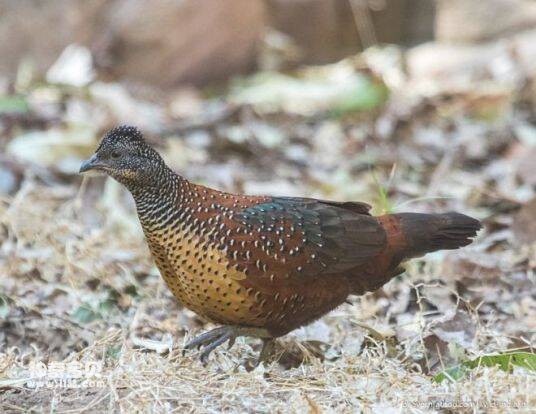Galloperdix lunulata
IUCN
LCBasic Information
Scientific classification
- name:Galloperdix lunulata
- Scientific Name:Galloperdix lunulata,Painted Spurfowl
- Outline:Landfowl
- Family:Galliniformes P.family Galliniformes
Vital signs
- length:About 34 cm
- Weight:226-385g
- lifetime:No textual research information is available
Feature
Dimorphic species endemic to the Indian subcontinent
Distribution and Habitat
Painted quail is endemic to the Indian subcontinent. It extends from the western to the eastern part of Rajasthan to the western part of West Bengal. The entire coastal area of the peninsula extends southward in addition to the coast. Distributed in many river areas on the northern limits of its territory, Madhya Pradesh in Sindh, Yamuna and Ganges River basin.
It mainly lives below 1000 m above sea level, living in rock and dry areas of shrub land, elm poplar, acacia and mimosa forest, preferring dry areas.
Appearance
The colored quail is 34 cm long and weighs 226-385 grams. Dimorphism. In adult males, the forehead and top of the head are blackish-green metallic with white spots. The rest of the head, neck, and upper chest are black with larger white spots. The central part of the chest and abdomen is golden yellow with distinct black triangular markings. The sides are brown, with white and black borders in the center of the spot. The lower abdomen and anus are brown with black spots. The upper part, which also includes most of the wings, rump and underside of the tail, is brown with white and black spots. The wing coverts, flight feathers and tail are black and metallic. The tail is wide and folded. The forehead feathers are smooth and unwrinkled.
The adult female has a dark brown head and neck. The crown is black with chestnut spots on the chin, throat and underpart. The rest are brown. The lower body is olive brown, but there is a lighter, finer blood red band in the center of the chest. The e
Details
Galloperdix lunulata: Painted Spurfowl, no subspecies.

The breeding and nesting season runs from January to June, but most activity occurs from February to May. In the Deccan Highlands, for example, this nesting time usually takes place in August. The nest is built under a rock or tree root, in a small depression, and paved with grass and leaves. It will also be embedded in a thick cushion inside a bamboo bed. Each clutch lays 3-4 eggs, rarely 5, and the eggs are pale in color and very similar to those laid by domestic chickens in neighboring small villages. The duration of incubation is unknown. But it is thought that it is incubated by the female chicken alone, but both sexes are involved in brooding.
Listed on the International Union for Conservation of Nature (IUCN) 2016 Red List of Threatened Species ver 3.1 - Not Threatened (LC).
Protect wild animals and eliminate wild meat.
Maintaining ecological balance is everyone's responsibility!








